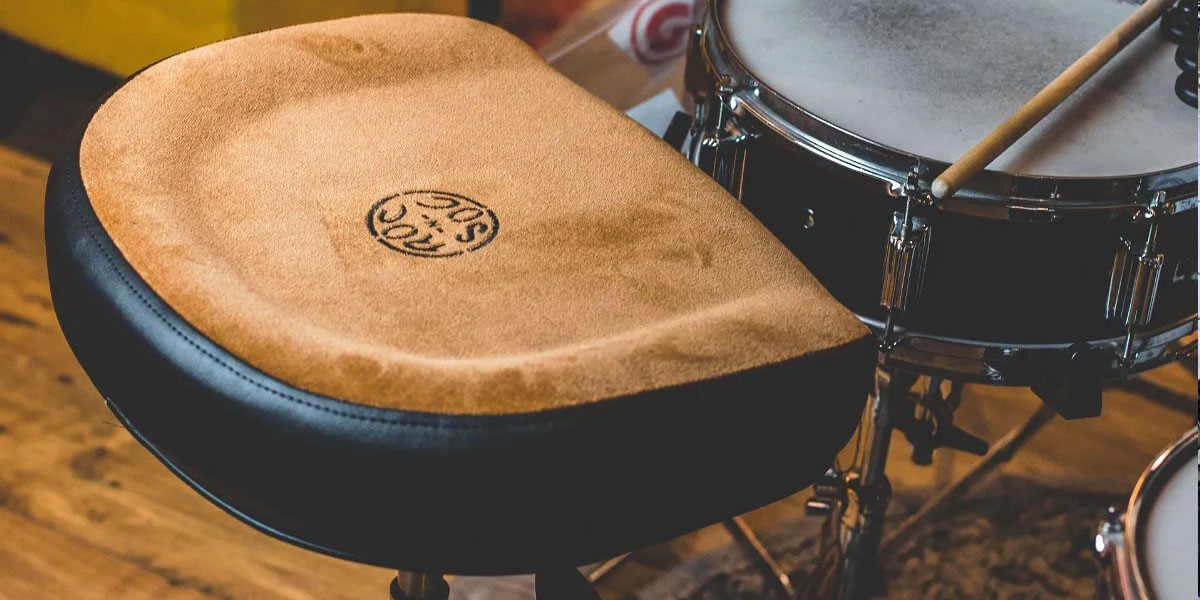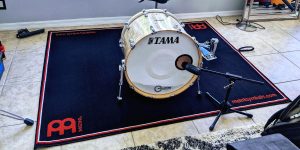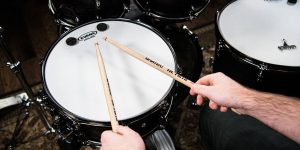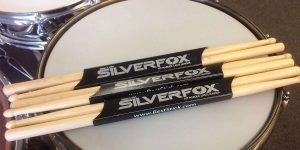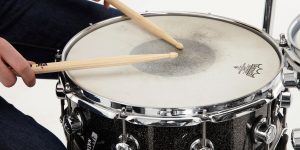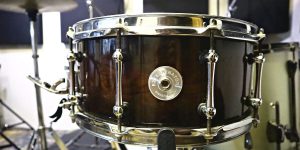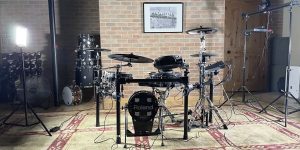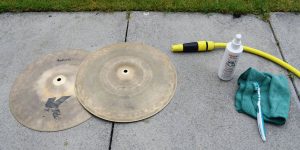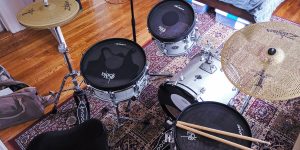When it comes to creating the perfect drumming setup, it’s easy to focus on the drums, cymbals, and other equipment, while inadvertently overlooking an important element: the drum throne. It might seem like a minor detail, but it plays a significant role in your overall drumming experience. A comfortable and secure drum throne can significantly impact your performance, endurance, and enjoyment during practice sessions and performances. In this guide, I’ll shed light on what is a drum throne and the importance of selecting the proper drum throne — one that not only supports your body’s needs but also contributes to your ability to play your best.
The importance of drum throne

A drum throne plays a great role in ensuring the stability and accuracy of a drummer’s playing. If you know how to use a drum throne, it can impact posture, balance, and overall drumming performance in the right way. Opting for a comfortable and well-designed drum throne is an investment in enhancing your drumming experience and longevity as a drummer.
The role of a drum throne in drumming. It acts as the anchor that connects a drummer to their entire kit, allowing them to focus on their playing without unnecessary distractions.
Why a comfortable throne matters. A comfortable drum throne enables drummers to maintain focus on their playing rather than being distracted by discomfort or shifting positions. This comfort also extends to long practice sessions and performances.
Evolution and innovations in drum throne design. Modern drum thrones now incorporate ergonomic features, adjustable heights, and cushioning technologies that cater to individual preferences and body types. Some drum thrones even integrate memory foam or gel padding to provide optimal comfort and support.
Seat padding and shape
Choosing the right upholstery and drummers seat shape depends on your comfort preferences, playing style, and overall drumming needs. It’s essential to select a combination that enhances your drumming experience and minimizes discomfort during extended sessions. Let’s explore all of the details which I’ve described in the tables below.
| Type of Upholstery | Pros | Cons |
|---|---|---|
| Fabric | Provides a soft and comfortable seating surface; available in a wide range of colors and patterns, allowing for customization to match your style. | Can be prone to staining and wear over time; it may require regular cleaning to maintain its appearance. |
| Vinyl or Faux Leather | Durable, easy to clean, and resistant to spills; it can mimic the look of genuine leather without the high cost. | In hot or humid environments, vinyl can feel less breathable than fabric, potentially leading to discomfort during long sessions. |
| Genuine Leather | Luxurious, comfortable, and durable; it develops a unique patina over time and breathes well, making it suitable for longer sitting periods. | Can be expensive and requires regular maintenance to preserve its appearance. |
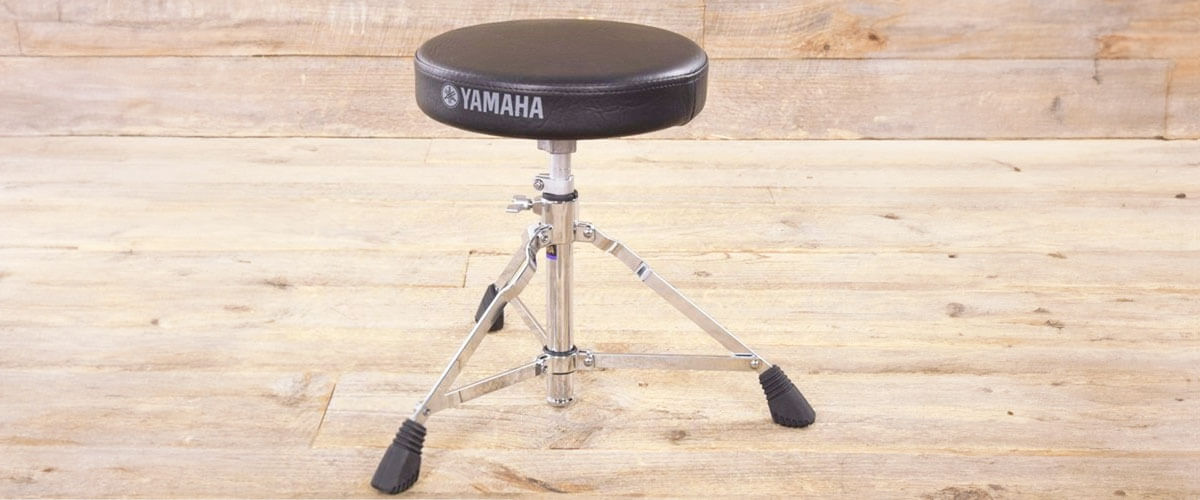
| Type of Chair | Characteristics | Design Features | Pros | Cons |
|---|---|---|---|---|
| Round Seats | Offer simplicity and versatility. They’re typically padded and provide a consistent seating surface. | Have a smaller footprint, making them suitable for tight spaces. Some feature additional padding or contouring for enhanced comfort. | Accommodate a wide range of body types and playing styles. They’re comfortable and familiar to most users. | Limited support for their legs, especially during prolonged playing sessions. |
| Saddle Seats | Resemble a horse saddle with a slightly raised back and a dip in the middle. This design encourages an open hip angle. | Promote better posture and spinal alignment. They offer good leg support and are designed to reduce strain on the lower back. | Encourage proper posture and can reduce fatigue. They provide more support for the legs and back. | Might take some time to get used to it. Some users might find the raised back uncomfortable. |
Stability and base design
The stability and base design of a chair, including a drum throne, are of paramount importance for several reasons. They directly impact the comfort, safety, and performance of the drummer. Here’s why these parameters should be at the forefront of your consideration when choosing a drum throne:
- Ensures safety. A stable chair prevents accidents and injuries. A wobbly or unsteady chair can lead to falls, potentially causing harm to you and your drum kit.
- Supports proper posture. When your chair is stable, you’re less likely to shift or adjust your position frequently.
- Enhances playing performance. With a solid foundation, you can channel your energy into your playing without being distracted by balancing on an unstable chair.
- Reduces fatigue. A stable chair allows you to relax and concentrate solely on your drumming, reducing unnecessary strain.
- Improves endurance. It helps you sustain your playing over extended periods by providing the necessary support and comfort.
- Prevents vibrations. A stable chair with a well-designed base can absorb and dampen vibrations, reducing their impact on your body.
As for the base design, its variety contributes to stability in distinct ways:
Three-legged base:
- Provides a triangular support system that evenly distributes weight.
- Offers stability even on uneven surfaces.
- Commonly used in drum thrones due to its reliable stability.
Tripod base:
- Similar to the three-legged base but with three widely spaced legs.
- Offers stability and often a slightly larger footprint for added balance.
- Particularly useful when playing requires a wide range of movement.
Four-legged base:
- Offers additional stability compared to three-legged designs.
- Ideal for situations where stability is a primary concern and space isn’t limited.
Swivel mechanism
A swivel mechanism in a stool for a drum set plays a significant role in the versatility and functionality of the stool during drumming sessions. While not absolutely necessary for all drummers, it offers several advantages that can enhance your playing experience:
- A swivel mechanism allows you to effortlessly rotate your stool while remaining seated. This enables you to access different parts of the drum kit.
- It enables seamless transitions, reducing the need for unnecessary movement and adjustments.
- Instead of contorting your body or twisting your spine to reach different elements of the drum kit, a swivel mechanism lets you pivot naturally.
- Swiveling minimizes the strain on your arms, shoulders, and back by allowing you to face the drum or cymbal you’re playing.
While a swivel mechanism provides valuable mobility, it’s equally important to have a locking mechanism in place. A locking mechanism serves to secure the chair in a stable position when swiveling isn’t required. Once you find the optimal position for your drumming, you can lock the drum set stool in place, ensuring that your playing remains consistent throughout your session.
Setting up and adjusting a drummer stool
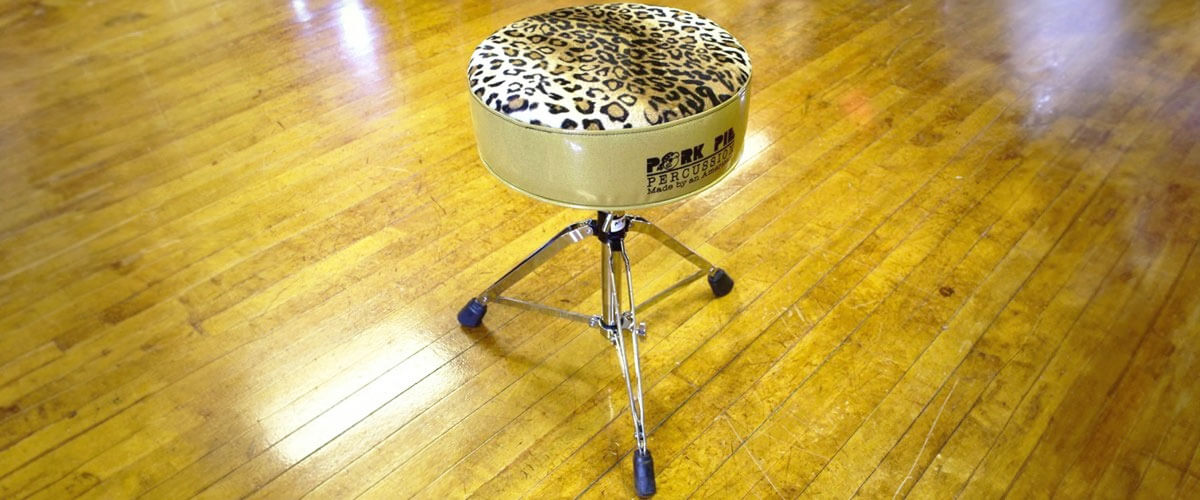
The height of the drummer stool directly affects the reach, posture, and control of the drum kit. Playing at the wrong height can lead to discomfort, tension, and even injury over time. On the other hand, playing at the correct pitch makes it easy to access all parts of the drum kit and play with precision.
Finding the right height
If you want to ensure a comfortable and ergonomic playing position. then follow my tips to set up and adjust your drum throne properly:
- Adjust the height of the drum throne so that your thighs are parallel to the ground when your feet are flat on the floor.
- If your drum throne has a swivel mechanism, ensure it’s free enough to allow comfortable movement while playing.
- Place the drum throne in front of your drum kit, ensuring that you have easy access to all the drums, cymbals, and percussion instruments you’ll be playing.
- Ensure that your feet are comfortably resting flat on the ground or on a footrest if needed.
- If your drum throne has an adjustable seat angle, experiment with different angles to find the most comfortable position.
- Sit on the drum throne and play a few basic rhythms to ensure that your seating position feels comfortable.
- If you have a specific playing style or technique that requires certain adjustments, make sure the drum throne can accommodate those needs.
Adjusting the height of your drum throne to accommodate your drumming style and technique is also important for optimal performance and comfort. Different drumming styles and techniques may require specific adjustments. Here’s how to consider your drumming style and technique when adjusting the drum height:
- Match the height to your playing style:
- If you’re a power drummer, you might prefer a slightly higher drum throne. This allows for more leverage and power in your hits.
- For drummers who focus on precise and intricate patterns, a slightly lower drum throne helps maintain closer contact with the drum kit.
- Adapt to technique:
- Heel-up vs. heel-down: Depending on which technique on the bass drum pedal you use, adjust your drum throne height accordingly.
- Hand technique: If you utilize various hand techniques such as traditional grip, matched grip, or finger control, adjust the drum throne height to ensure that your hands comfortably reach the drumheads and cymbals without straining your wrists or arms.
- Experiment and fine-tune:
- Start with a height that aligns with your current preferences and adjust gradually until you find the sweet spot.
- Consider longevity and comfort:
- Adjust the drum throne height to a level where you can maintain good posture and comfort for longer playing sessions.
Remember that there’s no one-size-fits-all solution when it comes to drum throne height. Your individual preferences and the specific demands of your drumming style and technique will dictate the best height for you.

